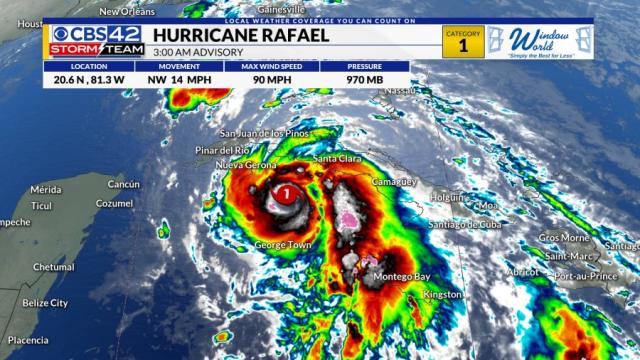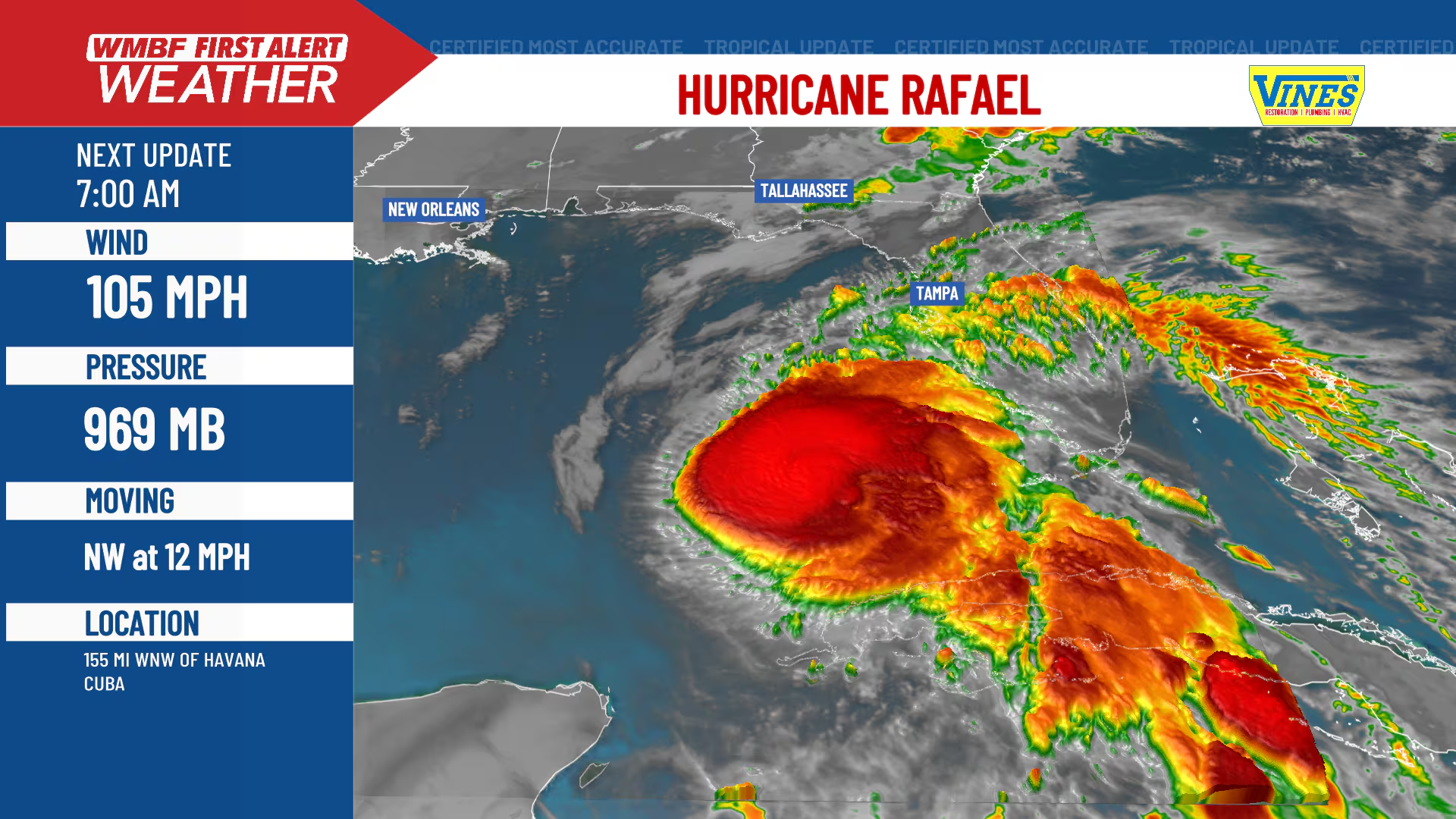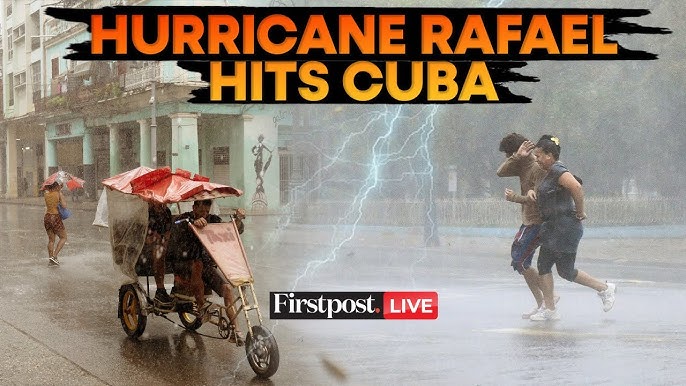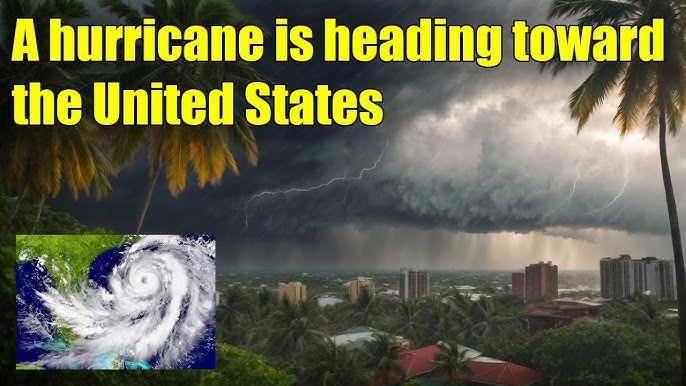Hurricane Rafael tore through Cuba on Wednesday as a Category 3 hurricane, leaving a trail of destruction and plunging the entire island into darkness. The storm, which rapidly intensified before landfall, knocked out Cuba’s entire power grid for nearly 24 hours, with winds toppling power poles, trees, and other critical infrastructure across the western and central regions. Rafael marks the fifth major Atlantic hurricane of 2024, and the most powerful hurricane this late in the season since 2020. As the storm moves into the Gulf of Mexico, it poses a significant threat to Mexico’s Gulf Coast, though the likelihood of a U.S. impact has decreased.

Power Grid Collapse and Recovery Efforts in Cuba
As Rafael approached Cuba with fierce winds, the nation’s electric grid could not withstand the force, resulting in a nationwide blackout. Félix Estrada Rodríguez, the director of the National Dispatch of the Electric Union, explained that strong winds disrupted the western section of the grid, leading to system-wide oscillations that triggered a complete power failure. Photos and videos from the aftermath showed the extent of damage, with downed power poles, tangled power lines, and uprooted trees obstructing roads and leaving parts of Cuba’s infrastructure severely impaired.
The Cuban government swiftly responded to restore power, mobilizing hundreds of technicians to repair damaged connections. State media reported that partial power was restored at two electrical plants, bringing electricity back to parts of central and eastern Cuba by Thursday afternoon. Meanwhile, the western region—hit hardest by the storm—remains a primary focus for recovery efforts. Bruno Rodriguez, Cuba’s Foreign Minister, assured citizens that intensive work was underway to reconnect damaged lines and reestablish the national grid. President Miguel Diaz-Canel announced plans to visit affected areas, including Havana, Mayabeque, and Artemisa, to oversee ongoing recovery efforts.
In anticipation of the storm, thousands of residents in coastal zones of Artemisa were evacuated, while much of Havana came to a standstill on Wednesday afternoon as civil defense officials urged residents to stay indoors. The impact of Rafael, only the second hurricane to strike Cuba in recent weeks, underscores the ongoing vulnerability of Cuba’s power infrastructure, which has experienced multiple collapses following recent hurricanes.
Shift in Rafael’s Path Away from the U.S.
Initially, meteorologists predicted that Hurricane Rafael could threaten the U.S. Gulf Coast, with early forecasts placing parts of Louisiana in the storm’s projected path. However, as the storm moved into the Gulf of Mexico on Wednesday night, its path veered sharply westward, reducing the risk for the United States while increasing concerns for Mexico’s Gulf Coast. This shift has largely kept the U.S. Gulf Coast out of the storm’s direct trajectory, except for potential impacts in southern Texas.
Experts predict that Rafael will remain in the Gulf for several days before reaching the Mexican coastline. Storm-disrupting winds over the weekend are expected to weaken Rafael, potentially downgrading it to a tropical storm by the time it approaches land early next week. While Rafael is not expected to make landfall in the U.S., it will still have indirect effects on the U.S. Gulf Coast, churning up rough seas and creating hazardous rip currents.
Impact on Gulf Oil Operations
In preparation for Rafael’s arrival in the Gulf, major oil companies have taken precautionary measures to ensure the safety of their operations. Chevron announced the evacuation of personnel from its Gulf oil rigs, along with the suspension of production activities. Shell and BP also moved non-essential personnel off some of their drilling platforms, according to company statements. These measures underscore the operational risks hurricanes pose to offshore drilling in the Gulf, which is a critical area for U.S. energy production.
Environmental Factors Driving Storm Intensity
Hurricane Rafael’s rapid intensification is part of a broader trend of more severe storms as climate change warms the atmosphere and oceans. Rafael became the ninth storm in the Atlantic basin to undergo rapid intensification this year. Such rapid strengthening is increasingly common as fossil fuel emissions continue to warm global temperatures, creating more favorable conditions for hurricanes to gain strength quickly.
Notably, Rafael’s arrival in the Gulf marks only the fifth time since 1966 that a hurricane has roamed the Gulf of Mexico in November. This rare occurrence, highlighted by hurricane expert Michael Lowry, emphasizes the unusual intensity and timing of this year’s Atlantic hurricane season.
As Rafael continues its path westward, both Cuba and Mexico are left bracing for impacts. Cuban officials are working urgently to restore services, while Mexican authorities remain on high alert as Rafael approaches their coastline. The storm’s shift in direction has spared the U.S. Gulf Coast from a direct hit, but Rafael’s effects, both immediate and indirect, are a reminder of the increasing power and unpredictability of Atlantic hurricanes.





